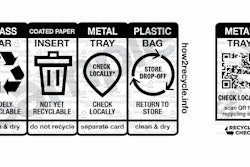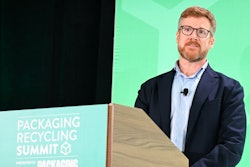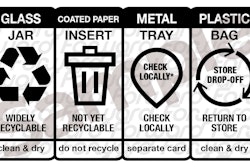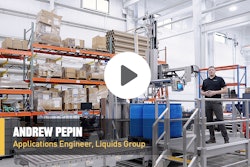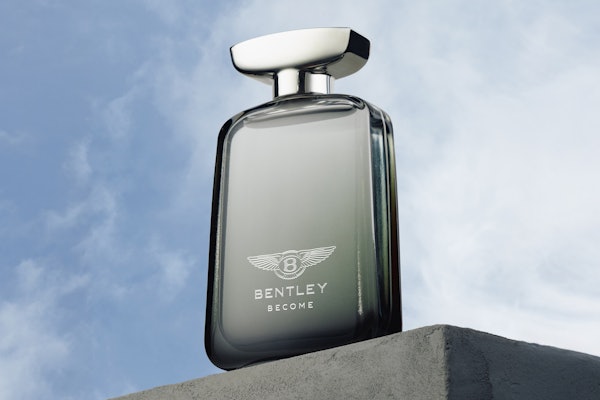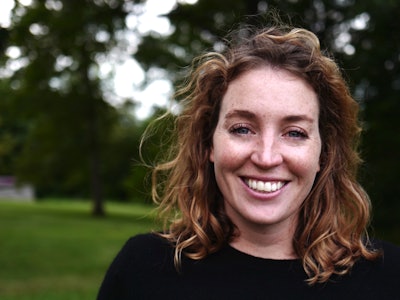
Each year, 120 billion cosmetic packages are created; very few are recycled. Most are landfilled, incinerated, or littered. In 2021, members of the beauty supply chain came together to bring circularity solutions to the beauty industry. In the following Q&A, Carly Snider, executive director of Pact Collective, shares the work the collective is doing to capture and recover these materials.
Packaging World:
Can you talk a bit about Pact Collective and why it was formed?
Carly Snider:
Yes, so Pact Collective was founded by MOB Beauty and Credo Beauty—two very progressive and sustainable companies. Credo is focused on clean beauty; MOB Beauty is a smaller brand that has spent a lot of time on sustainable packaging. They wanted to create a takeback program as well as figure out ways to make and support better packaging decisions. They formed Pact Collective to provide collection programs and educational resources in a pre-competitive way so that all of beauty can have a seat at the table when talking about these important packaging needs.
How is Pact organized now?
MOB Beauty and Credo were our first activator members, and so we did all of our piloting with them through our mail-back program and our in-store program. Now they are on our board and help us strategically in that capacity. For day-to-day operations, we’re a lean team of three, and we work independently of those brands to support the organization and make sure operations are moving forward and education is being executed.
Who can become a Pact member?
We are open to all stakeholders, and we have two different membership tiers. The first is activators, which would be any kind of organization that is directly impacting packaging waste. So this could be a brand, a retailer, a packaging supplier—anyone that is selling a product or is involved in that product process would be considered an activator. And then we also have an advocate membership tier, and this would be anyone that’s not directly impacting waste. So this would be non-profits, media, designers, consultants. Again, we want to get everyone out of their silos to have constructive conversations around beauty packaging and sustainable packaging in the beauty space.
This year we have announced that all activators have to enroll in a collection program. No longer can you just be a Pact member and check the box; this action has to happen. And that’s something we feel really strongly about, that to be a part of this and to be a part of these conversations, you have to do the first step and participate in at least one of our Pact-run collection programs.
What do your collection programs looks like?
First off, the big thing to note about our program is that we are completely brand agnostic, so we accept any brand that fits our specific collection guidelines. That’s really important for us in creating a process that’s streamlined and easy for customers to participate in. You don’t have to go to a Credo bin to drop your empty packaging off there. If you purchase the product there, you can go to the bin nearest to where you’re located and drop off any empty that fits our guidelines.
We have four different programs that members can choose from. The first one is an in-store collection program. This is best for retailers or brands that have brick and mortar. What this looks like is a collection bin that can be co-branded that sits on the store floor and allows customers to drop off their hard-to-recycle beauty empties for free. So that’s a cost the retailer or the store holds. For this option, we have an interactive map on our website where you can plug in your zip code, and you can see where a bin is located near you. Currently we have 2,800 bins across the U.S. and Canada.
 One type of takeback program run by Pact is the in-store collection program, where retailers have a collection bin that sits on the store floor and allows customers to drop off their hard-to-recycle beauty empties for free.
One type of takeback program run by Pact is the in-store collection program, where retailers have a collection bin that sits on the store floor and allows customers to drop off their hard-to-recycle beauty empties for free.
We also have an in-office program, which operates very similarly to the in-store except that it’s in an office setting so employees can participate. We’ve seen a lot of individuals use these bins for events they’re holding at their headquarters. It’s a great way to boost employee engagement and to have an easy way for employees to drop off their hard-to-recycle empties.
And then we have a mail-back program, which is focused on direct-to-consumer brands, so brands that don’t have that brick and mortar and have nowhere to place a bin. This is a great option for customers who don’t have access to a local bin. They can mail their beauty packaging directly to us, and we can process it alongside the other material we’re collecting across all of our programs.
We’re trying to make this accessible for everyone to participate in, but we encourage customers to leverage the in-store or in-office programs because that’s the most sustainable option; we want to ship this material in bulk. We want to collect high volumes and then be able to ship that rather than individual packages across the country. So that’s something we’re focusing on, and it’s been wonderful to launch with brands like Sephora, Ulta, Saks, L’Occitane, and Credo, and get our bin footprint up to almost 3,000 bins. The goal is to have a bin in every single community, so it’s really easy for customers to drop off empties.
The last program is our obsolete inventory program. This is more of a back-of-house solution, it’s not a customer-facing program. This program collects any kind of obsolescence—expired goods, returns, any kind of packaging that was defective during production and cannot be used. So any kind of material that is no longer sellable, we’re able to process and find best and highest use.
It seems like there’s so much more obsolete packaging in the beauty industry versus other product categories. Why is that?
There are a couple reasons for that. First, if you’re thinking about expired goods, we’ve seen there could be forecasting errors where we’re also coming up from COVID and figuring out the different supply and demand that was involved with that pandemic. And so we’re seeing a lot of truly expired goods that are sitting in warehouses. Either they were never sold at a retail location and therefore were shipped back to the brand, or they were never moved from the distribution center and because of a forecasting error, which happens, they were never sold.
What typically happens with that material is that it ends up going directly to the landfill or it goes directly to waste-to-energy. We want to collect this material and sort it before it goes to waste-to-energy. For us, it will never go to the landfill, but anything that has a full product left in it will have to go waste-to-energy. But what’s great about that initial sorting process is that we can actually de-box things. We’re taking caps off of this obsolescent packaging, we’re doing as much as we possibly can to sort out all the material that could be recyclable. It’s a really intensive process, but it allows us to make sure that we’re recycling what’s possible before it goes waste-to-energy. We’ve had some great case studies on this, and we’ve been helping a lot of brands make sure that we’re collecting a lot of this material so it doesn’t just get burned for energy,
But specifically for beauty, we’re seeing a lot of this because of COVID and because of supply chain and forecasting issues. Also though, what’s different than the apparel industry, for example, is the returns—that’s a big piece. When a customer purchases a beauty product and then leaves the store to try it and they want to return it, if it’s been opened, the retailer can’t sell it again due to regulations.
 | Read this related article on beauty packaging, “Estée Lauder Closes in on Sustainable Packaging Goals” |
That’s the first thing I always talk to customers about is to be very intentional about what you’re purchasing, and instead of returning it, think about giving that product to a friend. We’re also working with brands so that if they are offering the reimburse, instead of having the customer send it back to them or issuing it as a return, they’ll reimburse the customer, and then they can give it to a friend. That’s something we’re working on with ILEA, one of our member brands.
And for those customers who do send it back, we ask them to empty out the container and then send it back to us, so we can recycle it properly. So that’s a big piece of what we’re seeing—the returns are crazy. Everyone’s on TikTok looking for the biggest thing for anti-aging, and then they buy it, they try it once, it doesn’t work for them, and then they return it. Then we’re ending up with all this material that has been barely used that we have to figure out how to keep out of the landfill, but we can’t sell it again.
I’m surprised that people are returning beauty products at such a high rate.
I had no idea that was a thing, but just working with Sephora and others, it’s amazing the things that people are returning. They’re even using half the product and then saying, ‘Actually, I don’t like it anymore,’ and returning it. It’s really hard because it would be great to repurpose that material to give it a second life, but unfortunately we can’t.
We’re also trying to work with brands in the scenario of just over-forecasting and over-purchasing. We’re asking them to give Pact a heads up if they’re sitting on inventory that they’re not going to sell in time, and they’re around the six-month period of the expiration date. We have a partnership with Project Glimmer where we’re working to get those products donated and get them in the hands of underserved women versus just having them be incinerated or sorted out six months later once they’re expired.
There’s a lot to talk about with obsolete inventory. It is definitely the untold story around beauty that the customer doesn’t see, and brands are managing this at their distribution center. A lot is going under the radar as far as how massive this problem is and what the true solutions are. So we’re trying to start having these conversations and offer our obsolete inventory program as a solution.
Asking consumers to empty the packaging before they return product sounds like it could really make a difference in making sure the packaging gets recycled.
I also think the idea of dumping product that you haven’t used is also a good intervention of, ‘Hey, you can’t return that unless it’s empty or give it to a friend.’ I believe the process of doing that brings the customer on this journey of, this is the reality. It brings them behind the scenes of what is truly happening—that because of your purchasing decision and not using the product, it’s pretty much trash, and now you’re dumping it down the drain. I think that’s really startling for a lot of our customers and gets them thinking.
You touched a little bit on the challenges of package recycling that are specific to the beauty industry. Could you address that a bit?
With beauty, the unique problems are pretty much three things. The first is the packaging size. What we’re looking at with beauty is a lot of teeny, tiny pieces and also multiple pieces that can make up, let’s say, a serum bottle. There’s the bottle itself that is tiny, and then you have the dropper or some kind of an applicator that is also another individual tiny piece. So it’s a lot of different pieces that are small in size. And what happens at the material recovery facility [MRF] is that a lot of this material falls through the cracks. Anything that is under two by two inches is falling through the cracks of the facility and ends up on the floor of the facility and then goes directly to the landfill. Our process looks different than a MRF. We’re sorting by hand, and we’re able to recover these very small pieces.
 Pact accepts cosmetic or beauty packaging that is non-recyclable due to its size, the material it’s made from, or the number of components that make up the package.
Pact accepts cosmetic or beauty packaging that is non-recyclable due to its size, the material it’s made from, or the number of components that make up the package.
The other thing that’s happening is that beauty is really leveraging material types that are considered low-value plastics—the number seven “other” category. For MRFs, a lot of times it doesn’t make sense for them to process it because it’s so low value. So what happens is they end up sending it to the landfill, or they put it in a mixed bale and it’s downcycled, which is better than the landfill for sure.
With our system, because we’re sorting everything by hand, we’re consolidating volume, we’re collecting those small items and low-value plastics and trying to find the best and highest use for that material.
And then lastly is mixed material. With beauty, we see a lot of, let’s say, pumps or other kinds of applicators that have different types of material associated with one unit. So if you look at a pump, there’s probably a couple of different types of plastic. It gets rejected because it’s impossible for the recycling facility to separate those components because there’s not a manual sort or disassembly process. For our solution, we take that initial step to separate pieces.
One of the examples I always like to share is the glass dropper that has the silicone squeeze on top. We separate those two components as part of our manual sorting process.
So those are the three kind of topics that I always share: the size, low-value plastics, and then mixed materials that are really unique to beauty. Those are the top contenders of why these packages are not getting recycled through MRFs
What would low-value plastics consist of?
A lot of it is SAN [styrene acrylonitrile], ABS [acrylonitrile butadiene styrene]. Those are probably the bigger ones when it comes to beauty. But then there’s also LDPE, which is used for a lot of squeezable tubes. We’re working really hard on our process to separate LDPE out and find ways we can mechanically recycle it and look for better streams.
For a lot of MRFs, squeezable tubes get completely rejected. They lay flat when going down the conveyor belt and the disc screens in a MRF, and because they lay so flat, they also tend to fall through the cracks. So that’s something we’ve definitely highlighted as an opportunity for the beauty industry to consider different kind of packaging alternatives, because those are very difficult and a lot of times have mixed material in them as well.
We can even add flexible packaging to that as well, where we have different layers of different plastic, and then that becomes mixed material, which would also be thrown into our number seven bin.
Why would you collect materials such as PET or HDPE since they’re so widely recyclable?
This is really important and gets at what Pact’s role is in this. We work outside the boundaries of MRFs, and so it’s important for us to only collect things that cannot be processed because of their size. So even if it’s a PET bottle where PET is widely recyclable, it’s still falling through the cracks if it’s smaller than two by two. So what we suggest and what we ask customers to do is to drop that off at a collection bin or through our mail-back program so we can process it because we don’t want it ending up in the landfill. But we’re also very clear with those PET or big HDPE bottles that we see to leverage local solutions. We don’t want to ship big containers that can be recycled locally. So along with our collection guidelines, we have what should go in the Pact bin, what should go in the blue bin or the curbside bin, and then what are the things that should just go in the trash because no matter where you ship it, it’s not going to be recycled.
So we offer a lot of that education for our program, but also beyond that to make sure we can provide really clear and simple instructions for beauty customers on which one of those three kind of disposal solutions a package should go in. That’s why you’ll see a low weight for those materials. We’re only collecting the really small pieces.
Once you get the empty packaging, what do you do with it?
We find best-in-class collection partners that are focused on processing small-format and hard-to-recycle items. We currently have three collection partners. Our primary facility is in Chicago. We work independent of the recycling partner, so we go in as almost the auditor for our members to make sure that operations are set up correctly and that we’re getting the data that we need, and then making sure the material is moved to best and highest use.
We have an extensive protocol that each of our collection partners has to follow, which includes an on-site audit. This includes strict guidelines on what the sort needs to look like, what data sets need to be collected, and then we have final say on where the material goes once it’s getting sorted.
We’re working very hard to make sure this material doesn’t just get sent to the highest bidder, but that we’re finding creative solutions on how we can move this material to mechanical recycling as our top priority.
What we found is that with recycling, it’s definitely a volumes game. So being able to present a unified solution for the industry and collect material and consolidate it across all of our programs allows us to find solutions for mechanical recycling for our material. A really important piece of this is the consolidation we’re seeing. If Pact didn’t exist, and brands created their own programs, they would never have enough material to send it to be mechanically recycled. It takes a long time.
A big piece of what we’re doing is sitting on the material, consolidating it until we hit that threshold together as an industry, and then we can look at better options. What we’ve seen with a lot of these recycling partners is that they don’t want to sit on the material, it’s expensive. But for us, we would get there faster since all of our programs are linked together, and we cover that cost to make sure we hit that threshold, and then it can be mechanically recycled.
You talked about mechanical recycling. What do you see as the potential for advanced recycling for some of these materials?
When we talk about best and highest use, it’s our second solution. We’re first looking at mechanical recycling, if that’s upcycling or downcycling, and then next would be molecular recycling, and then after that is waste-to-energy. We’ve had a lot of conversations with Eastman, Eastman’s a Pact member, and we’re working on some exciting pilot programs. We definitely see it as something that’s going to be supportive and helpful for beauty. We’re making sure that it makes sense from a carbon footprint perspective. It’s a very energy-intensive process to molecularly recycle these materials. Also, when you talk about chemical recycling or advanced recycling, there’s also so many different processes that fit underneath that umbrella that also need to be targeted differently.
 | Read this related article, “L’Occitane Cosmetics Bottle Uses 100% Enzymatically Recycled Content” |
It’s a complex conversation, and it’s new technology, but I feel like with what we’re seeing, and specifically our conversations with Eastman as Pact members, we’re feeling like this could be a great solution for some of the material types that just can’t be mechanically recycled
What I like about Eastman is that it’s material to material. They don’t leverage material to fuel. That’s something we’ve highlighted as a really important piece to this. We don’t want to turn packaging into fossil fuel. We want to make sure it’s actually given a second use in some capacity.
We also are working in other alternative materials, not just plastic. So we collect glass, metals, etcetera, and we’re seeing a shift in some of our brands away from plastic for sure. We’re suggesting shifting away from virgin material, but we also have the capabilities of processing different material types from plastic as well.
Can you talk about the Bluebird widget and how that can be used by Pact partners?
Yes, this is a really exciting initiative. Bluebird has been an amazing partner, and we’re excited to collaborate with them on this. It’s free to Pact members, along with two other widgets, as part of their perks. What this looks like is it’s a widget that can live on your website, and it provides recycling and collection instructions to the customer. So a customer can go on the site, and let’s say they’re purchasing a body or a face moisturizer, there’s a widget that can live on the product page that goes through and says, okay, the pump is hard to recycle and should go to Pact, whereas maybe the bottle is bigger than two by two and it’s made of PET and can go curbside.
So it provides individual instructions in a simple, tangible way for customers. Then, if something is identified as hard-to-recycle, a customer can enter their zip code, and it will show them where a collection bin is located near them, or it links to a mail-back program the brand is sponsoring, as well. So it offers both options.
We’re also seeing a lot of our brands leveraging QR codes on their packaging with recycling or disposal instructions and that QR code links directly to this recyclability widget, so it’s kind of a one-stop-shop for recycling and disposal instructions.
That’s excellent, because I know one of the biggest hurdles is to recycling is reducing consumer confusion.
Exactly. It’s been really helpful. And also, there’s a back-end process too, where the brand gets a full report on the specifics of why that component was considered hard-to-recycle and why the other component can be curbside. So it approaches this from two angles, where it’s instructions to the customer and then the brand gets a full, more dense report so they can educate themselves, and then maybe the next time they’re doing a redesign, they can consider those points and design away from hard-to-recycle. PW


